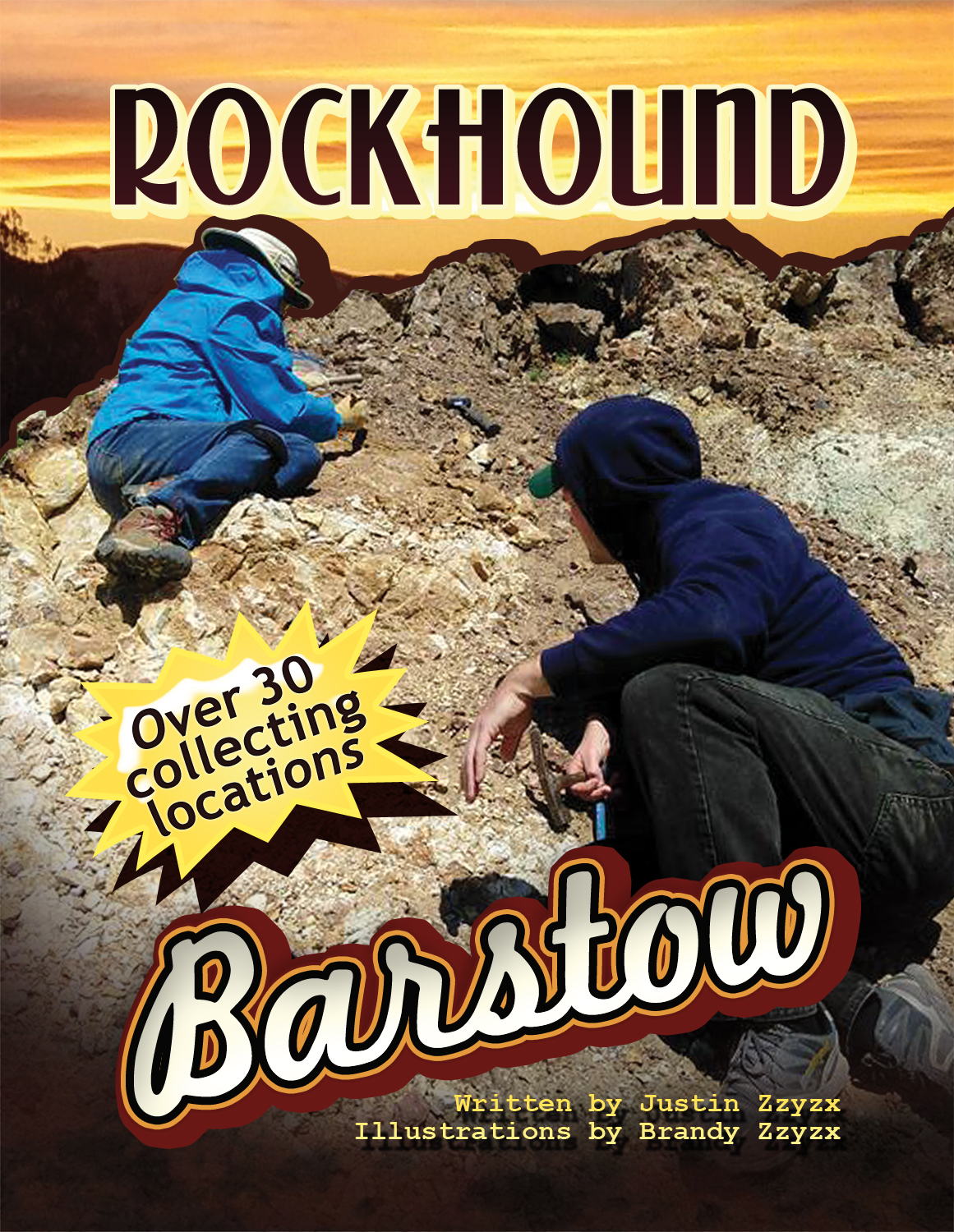While researching mineral locations for the field guide “Rockhound Barstow” we noticed a few different fluorite deposits listed with vague pinpoints associated. One of our favorite spots to visit is the area south of Afton Campground.
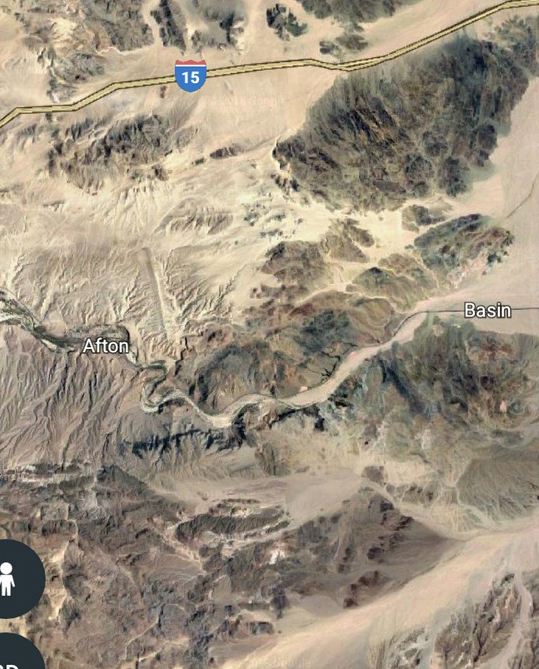
Highway 15, halfway between Las Vegas and Los Angeles with Afton and Basin, the West and East ends of Afton Canyon seen and the popular agate/jasper collecting spots of the North Cady Mountains in the lower half of the map.
Afton Canyon is a remarkable place, featuring dramatic walls surrounding miles of washes leading into the Northern Cady Mountains, a wonderland of agates, jaspers and various mineral oddities. To the North, there are two exits that will take you from the 15 down to Afton Canyon and the North Cady’s. Afton Road will take you to the campground and for those with 4×4, you can take the Spanish Trail East and you’ll pop out on the other side of the mountain, otherwise accessible by Basin Road, the next exit Northbound on the 15 from Afton Road. Taking Afton Road will get you to the campground where you can proceed into the area on foot, or, by taking Basin Road, you can drive to the deposits on rugged dirt/rock/sand roads.
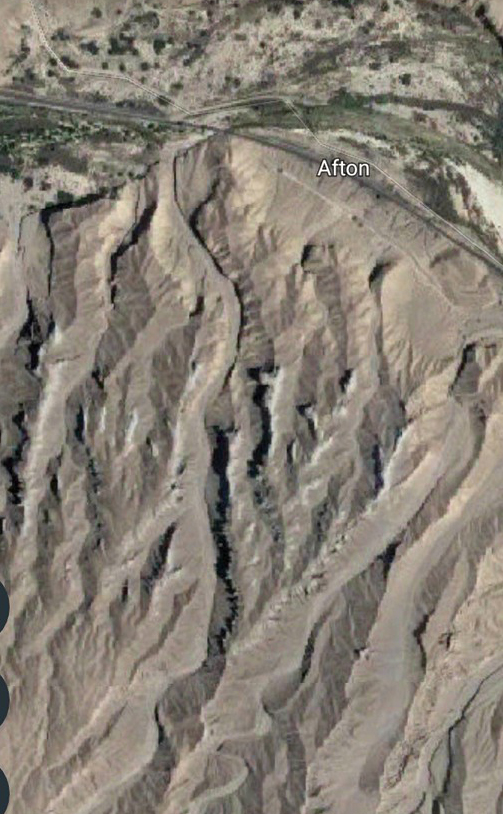
Afton Campground with parking, leading to the large canyon, Pyramid Canyon, with the popular collecting site Hanging Canyon seen in the center, just to the East of Pyramid Canyon.
For our trip, we can go two ways. We can drive in on Basin Road and then take a series of washes and mountain roads and bam, you can drive right to the fluorite prospects. It is a tough drive and with some satellite maps and planning, you can attempt to reach the location via vehicle. We do not go in this way. We walk in from Afton Campground, through Pyramid Canyon. You start by going under the railroad bridge and across the shallow waterway of Afton Canyon to head South into the giant canyon wash. This wash continues for about 1.6 miles taking you through some magnificent large canyon walls, ending at a giant block of black basalt with a waterfall opening some 100+ feet from the bottom. Instead of walking to the back, we walk up a switchback .2 miles before the end, which takes us up to the top of the canyon. A road and path lead you to the upper wash, which would spill out into the lower wash we just hiked up. This whole area is a treasure box of crystals and lapidary goods, with different things found on different hills. Tons and tons of red and yellow jasper is found all over, zeolite included agates and jaspers, crystals of quartz and calcite and even some odd-ball zeolites, casts and epimorphs are found tumbling out of the basalt hillside. The basalt here features areas of intense gas bubble inclusion, resulting in literally MILLIONS of quartz pods filling the ground. Some of these have crystals, some of them did weird things, like replace zeolites and anhydrite, some of them have calcite on top of quartz, sometimes the quartz is over the calcite. It is a fun, uncommonly visited, vast in area, place, most often visited by people in search of agates and jaspers.
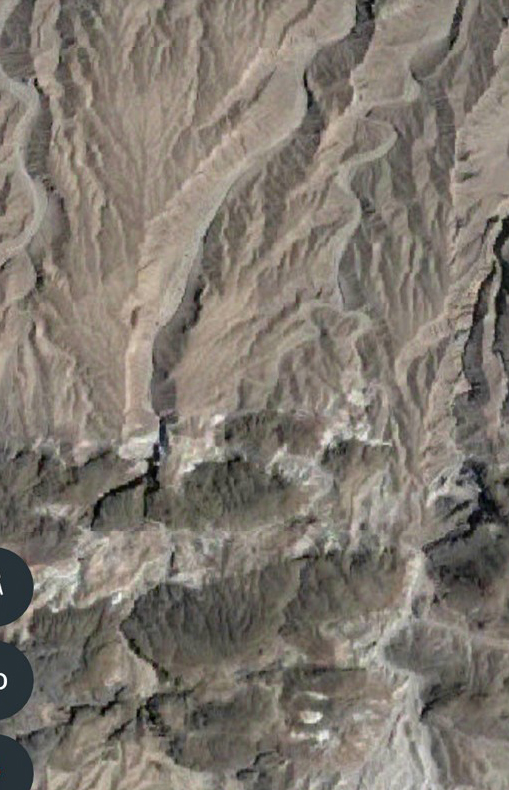
The Pyramid Canyon wash leads you to the near end of the lower canyon, then a out of use dirt road takes you up and to the Eastern side of the canyon and up into the black basalt deposits that make up the upper part of Pyramid Canyon.
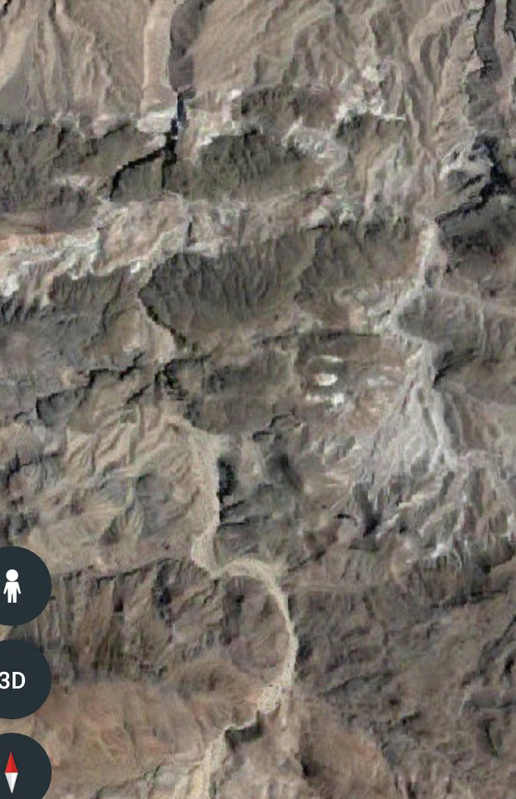
Satellite view of the basalt hills at the end of the Pyramid Canyon heading to Afton Campground. At the bottom of the photo you can see the “Mixing Bowl”, to the right of that the Fluorite deposits are found.
Continuing South on the upper wash of Pyramid Canyon you come to what we call the “Mixing Bowl”, which is an area that had three washes mix into it, making what looks like a pool in the wash. To the South there is a 10 foot waterfall wall which most can scale up with little assistance. To the SouthEast there are two washes, both of which lead to the Fluorite deposits of Afton Canyon. Yet, they are not really terribly close to Afton Canyon, we just had to walk nearly 2.7 miles to get there, from Afton Canyon. Maybe the Fluorite deposits of Near the wash that leads into Pyramid Canyon did not have the same ring.
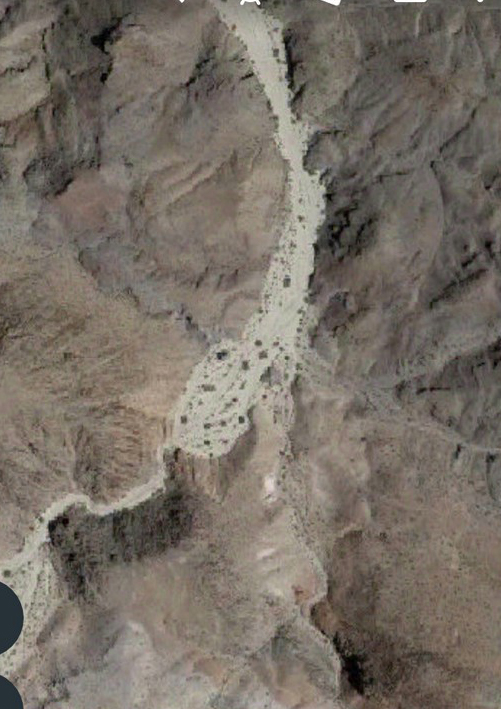
Satellite view of the “Mixing Bowl” near the end of the wash above Pyramid Canyon
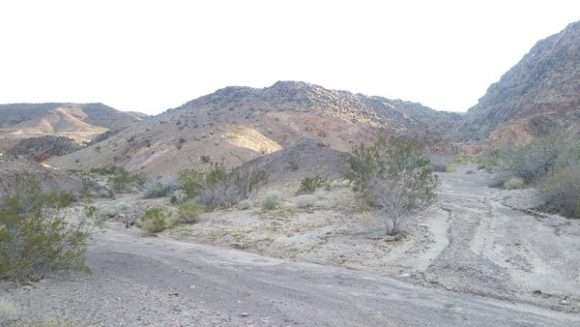
Mixing Bowl near the furthest point of Pyramid Canyon. Waterfall to the Right leads to the Cattail fossils, to the Left is the wash that leads to the Fluorite deposits.
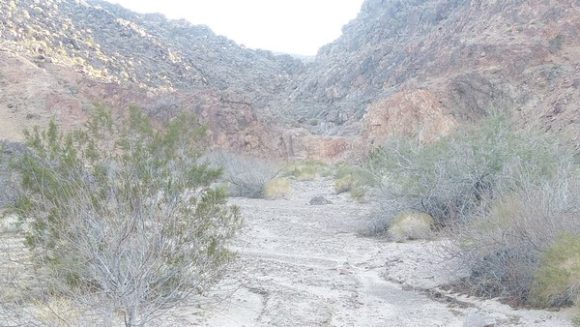
To the North of the “Mixing Bowl” there is a 10 foot tall rock wall, a former waterfall, you have to climb up, or down.
If you hop up the waterfall you can walk over to a deposit of “Cattail” reeds, or Typha. You will see hundreds of reed stalks along with dozens and dozens of pods of seeds, the familiar “Cattail” part, which have been turned into quartz and calcite geodes, sometimes with banded red and white jasper/agate. Those ones are particularly showy. Some lapidary collectors have taken advantage of the pretty banded agate/jasper available, yet literally tons more are there, not including another deposit further North with the same type of material. More deposits of Typha fossils must exist in more locations in these hills.
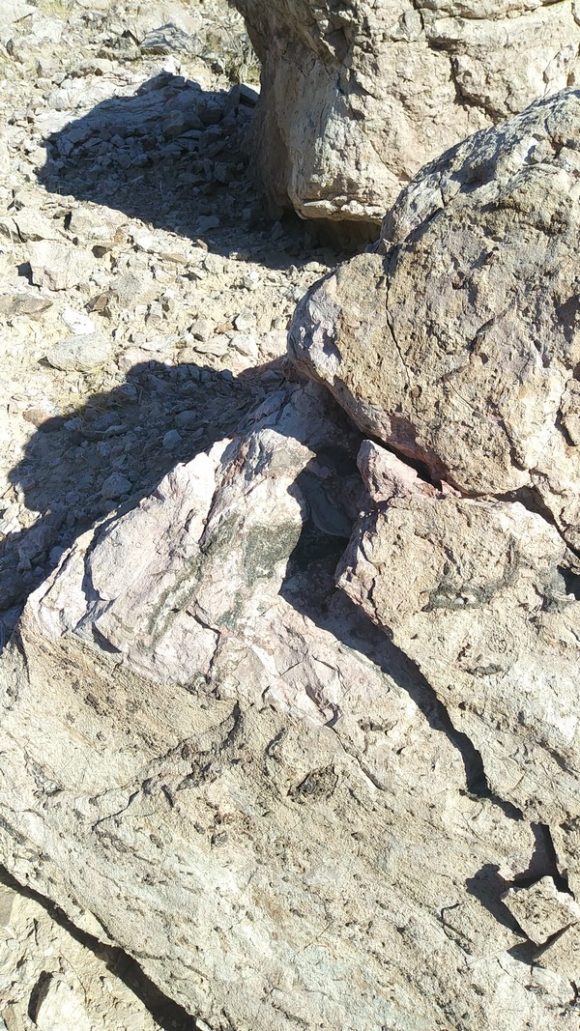
Fossil Bearing Matrix of Typha, Cattail reed fossils. They have been silicated and contain colorful jasper and quartz crystals.
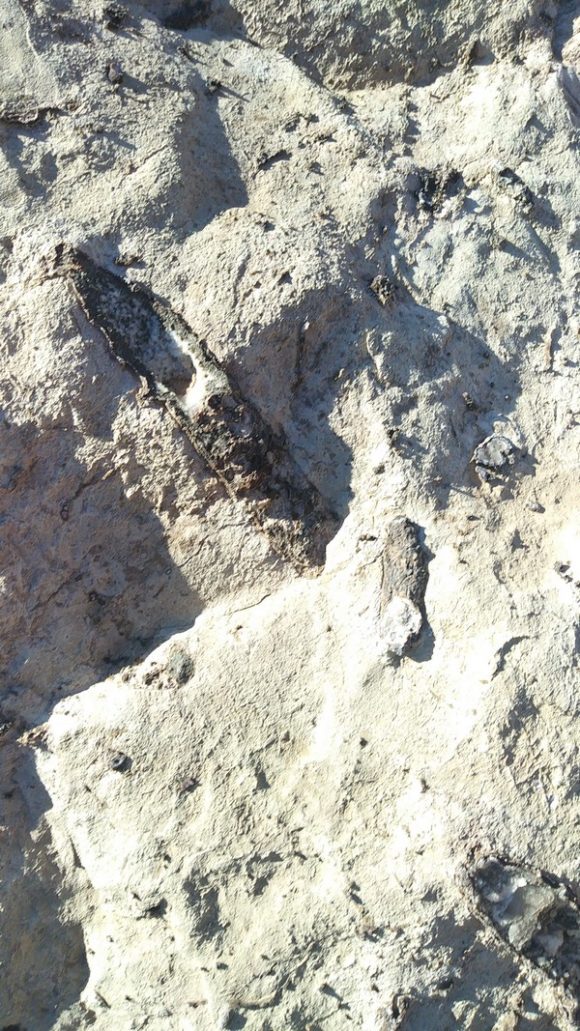
Cattail or Typha, fossilized and replaced with a core of quartz crystals. You can see two of them in the center of this photo.
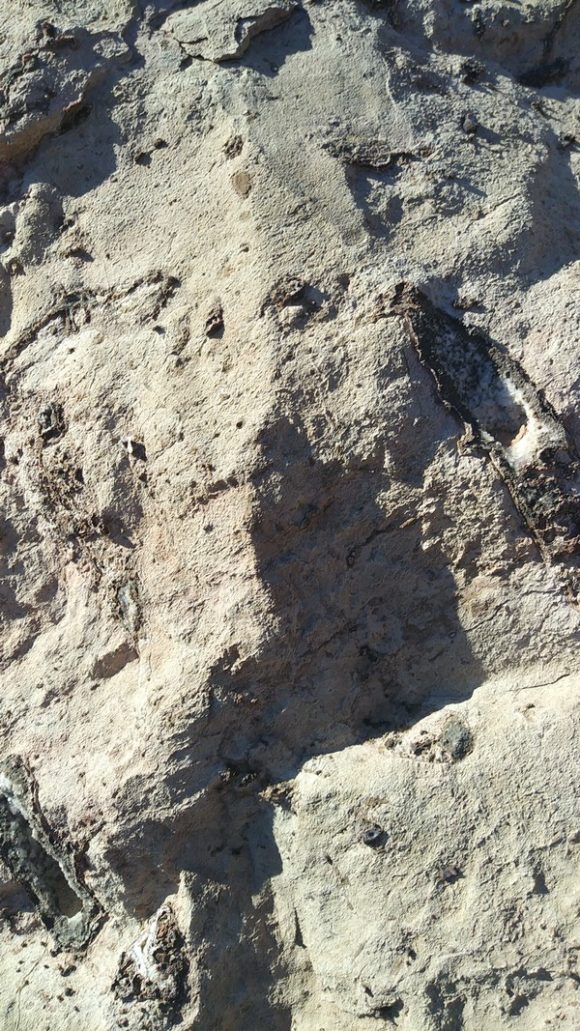
Hollow casts of Cattail fossils found in Pyramid Canyon
From the cattail fossil site, there is a road that takes you Westward towards the Basin Road area via a DEEP dip Southwards via Baxter Wash. Just a short distance West on this road and a faint turn off will be visible on the North side of the road. This turn off leads you to the start of the Fluorite prospects.
If you like this article, check out the 28 page full color field guide “Rockhound Barstow” for sale online at the following links
Buy it on eBay
Order it on Amazon, or Buy it for Kindle eBook Readers
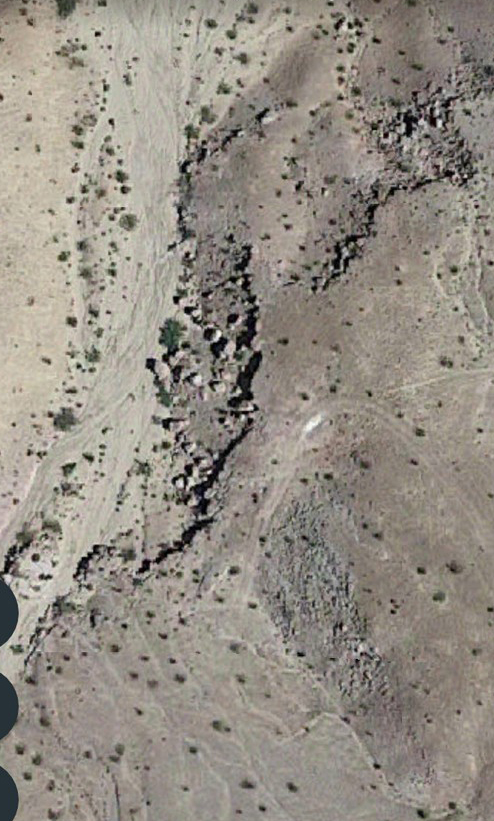
The Boulders to the side of the wash contain numerous fossils of Cattail reeds. Note the faint road to the side. This road is navigable from Basin Road.
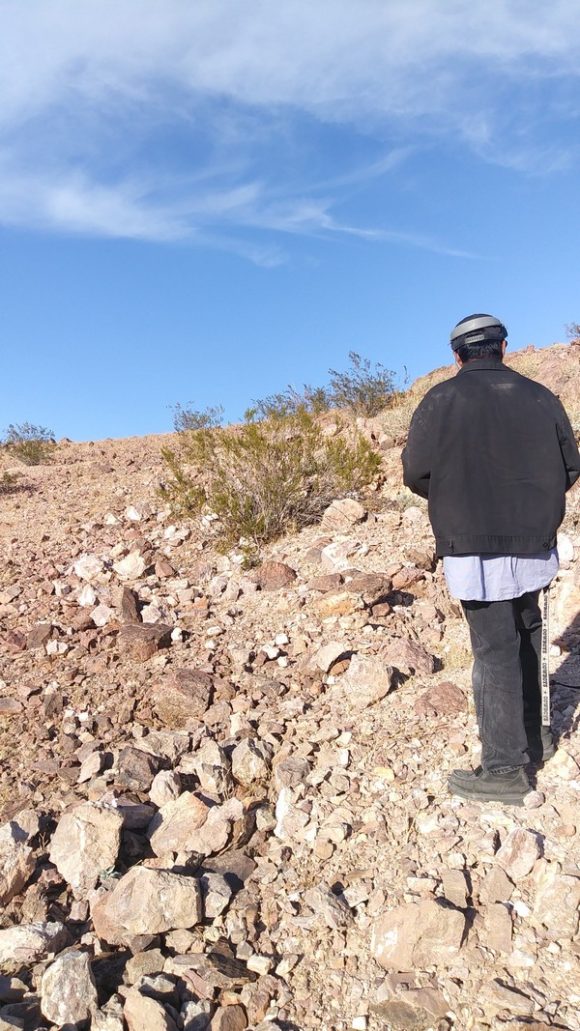
After 2.7 miles of hiking, we found the start of the Fluorite deposits of Cady Mountains.
The area is quite long, up to a mile of prospects dart the hillside. The fluorite found here is green and purple and requires some real work to move hard rock and discover undamaged crystals that have not been hit by the sun. The sunlight turns these green crystals to a bleached white, as with most fluorites. Even with the sunbleached specimens, the UV reaction on these is amazing, LW, the most common type of inexpensive UV light source, makes this material GLOW!
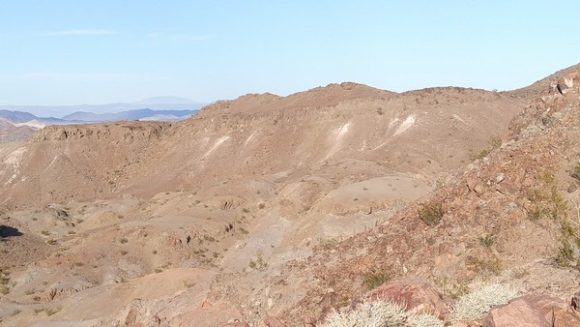
The white areas in the distance are all prospects for Fluorite. The deposit spans nearly a mile in distance.
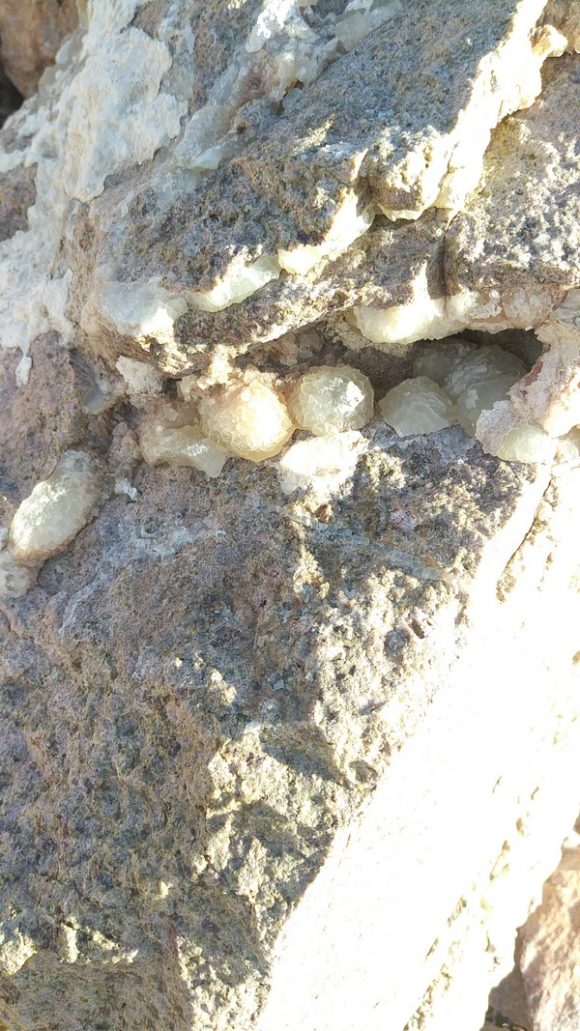
Crystals of Fluorite hidden away inside a pocket on a boulder at one of the many prospects for Fluorite in the Headwaters of Pyramid Canyon.
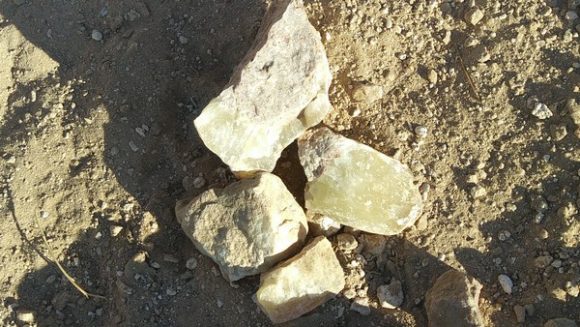
A few specimens of Fluorite we found as we were looking for the Afton Fluorite Deposits.
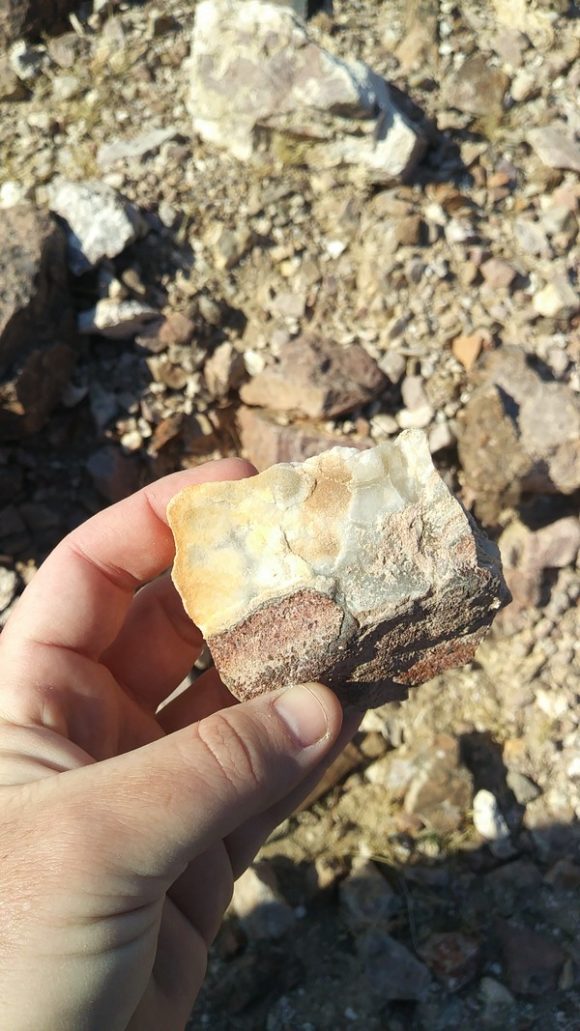
Skin of Green Fluorite on Matrix
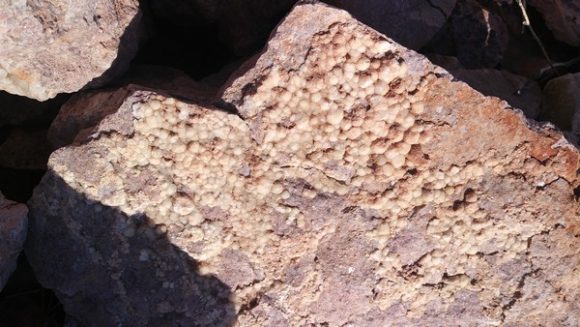
Spheres of Fluorite on Matrix. Originally Green, faded in years of sunlight.
As you can see from these photos, hard work and tools are required to unearth new, colorful specimens. After learning about the historical mixup on the true location of this deposit, we hightailed it to the location and hiked the 2.8 miles of washes, switchbacks, trails and amazing scenery that if you are near this area, you really should come and see. We had to hurry and hike back out just as quickly so we could get out before nightfall. While we did not uncover any amazingly bright green crystals, we did not dig, we just examined what we found on the ground and in the ground at the prospect holes around the area. It takes about 1 hour to walk from the campground to the “Mixing Bowl” waterfall in the upper part of Pyramid Canyon. Driving into the area takes about 45 mins to an hour from Basin Road. Walking in you get some serious exercise! Driving in, you can haul a lot of tools. Walking in you really get familiar with the landscape and areas, driving in, you get to business. Either way, the Fluorite deposits 2.8 miles South of Afton Canyon, near the headwaters of Pyramid Canyon, are ready for you to come and visit.
Plenty to see and explore all around this area for those fit enough and respectful enough of our beautiful desert mountains.
